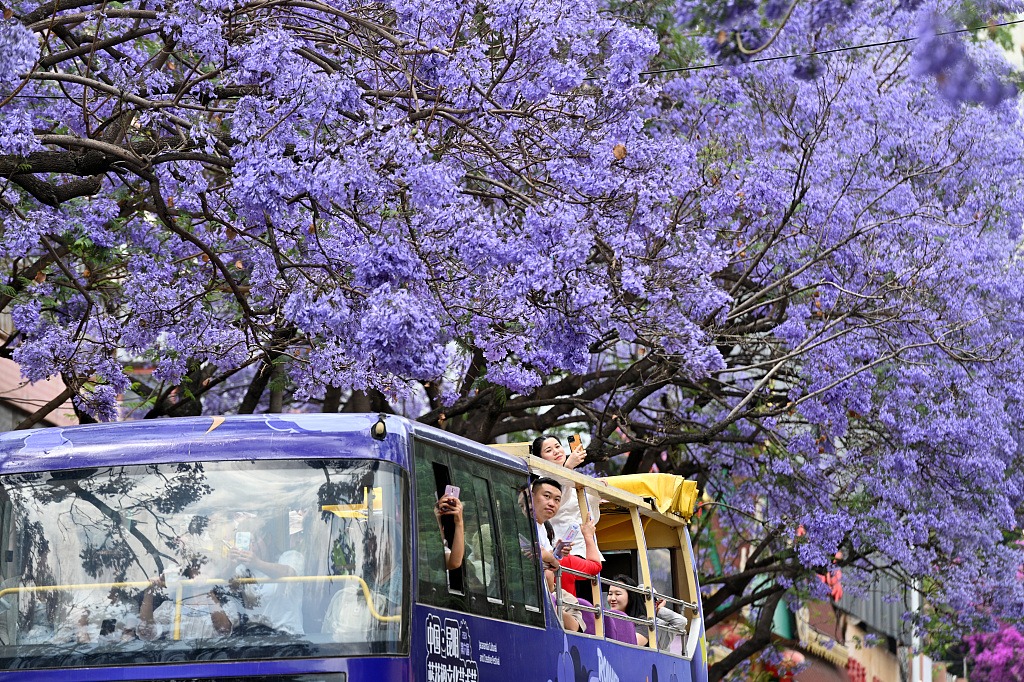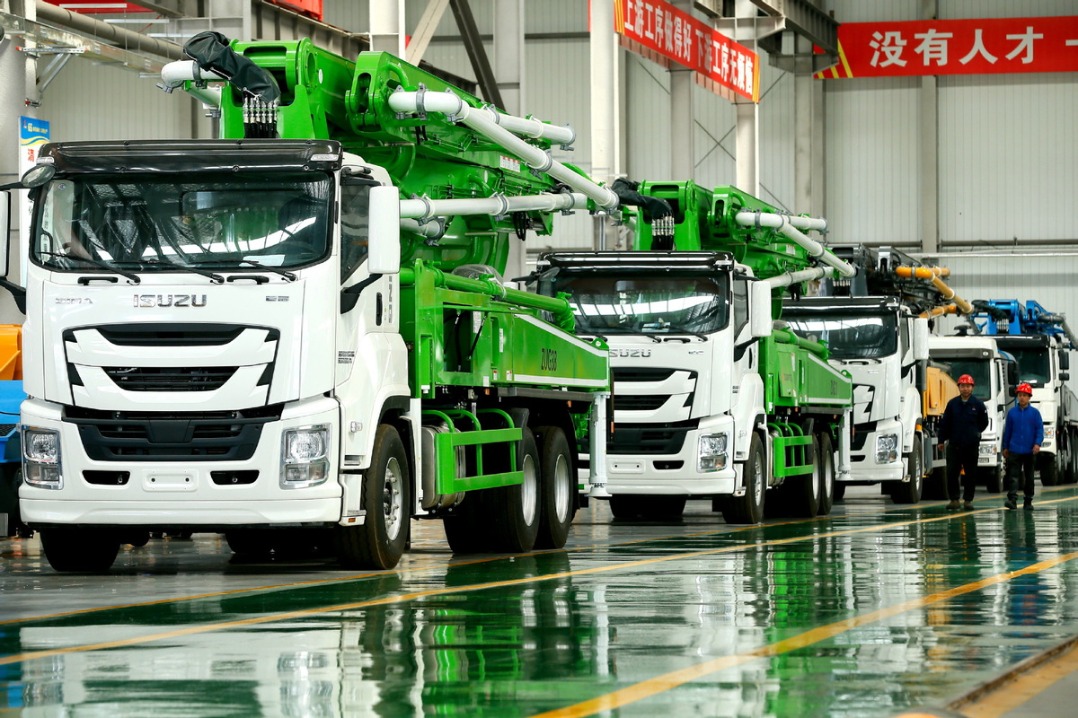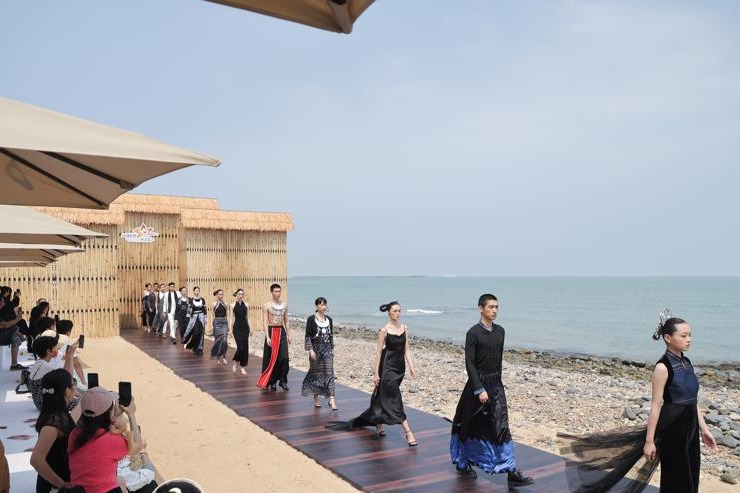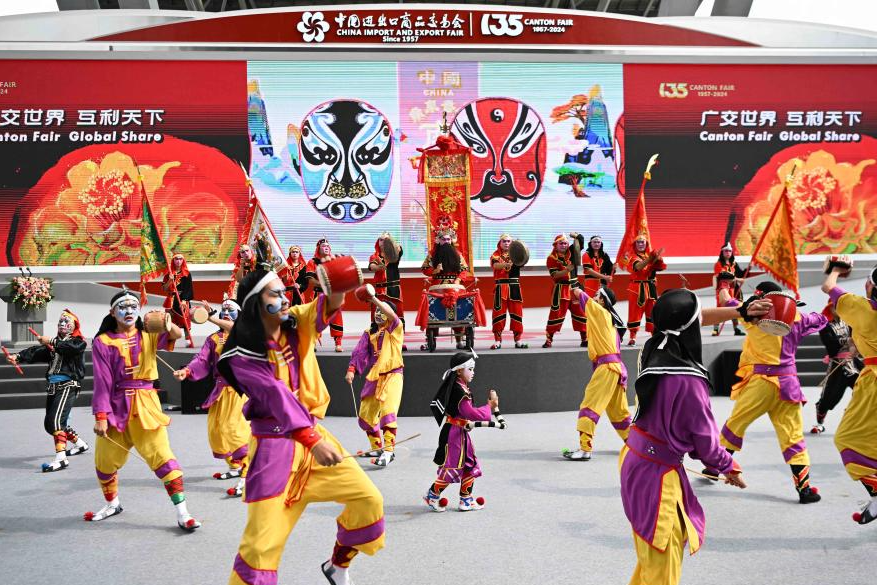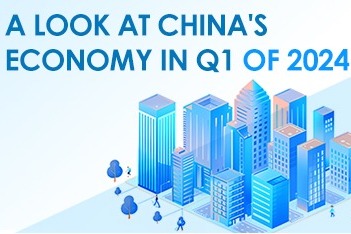Milestone reached on Sino-Lao railway

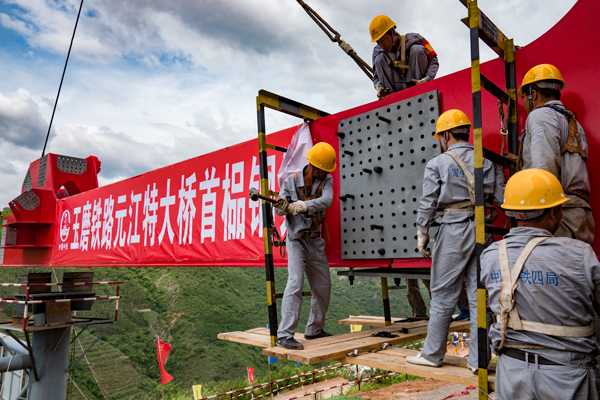
Builders began to lay the first steel truss complex on Friday on Yuanjiang Railway Bridge-which has the tallest bridge pier in the world and the longest span between two piers-on the Chinese section of the 925.5-kilometer China-Laos railway, a major project in the Belt and Road Initiative.
The enormous metal framework, 13.5 meters long, 16 meters wide and 16 meters high with a weight of roughly 400 metric tons, is the first of 56 such structural components to stand on the 832.2-meter Yuanjiang Railway Bridge, said engineer Xie Lu from the China Railway No 4 Engineering Group Co Ltd (CREC4)-the company building it.
The dual-track bridge, spanning the V-shaped Honghe River Canyon, is one of 134 bridges being built on the 508.5-km Chinese section of the railway, which links Yuxi city in Southwest China's Yunnan province and the Lao capital Vientiane and will be fully operational in December 2021.
The main span of Yuanjiang Railway Bridge, which is 832.2 meters long with six piers, is 249 meters in length while its No 3 pier is 154 meters high, about the height of 54 stories in a high-rise, said Ruan Zhengjie, Party chief of Steel Structure Construction Co Ltd under CREC4.
The foundations of the tallest pier go 78 meters underground and took 22 months to build, he said.
Construction of the Chinese section, also called the Yuxi-Mohan Railway, started in April 2016 with an investment of 51.6 billion yuan ($7.9 billion) and 86.12 percent of it is comprised of bridges and tunnels, joining the Mohan-Boten border gate in northern Laos.
The 417-km-long Lao section, linking Mohan-Boten and Vientiane, has an operating speed of 160 km per hour with an investment of 37.4 billion yuan, said Wang Bingyan, manager of CREC4's No 4 subdivision of the Yuxi-Mohan Railway project.
According to him, the railway will allow landlocked Laos to become "land-linked", lowering production costs and boosting trade, investment and tourism.
As a demonstration project in China's "going global" strategy, the China-Laos railway is an achievement in Sino-Lao cooperation under the Belt and Road Initiative, which aims to build a modern-day Silk Road connecting economies in Asia, Africa and Europe by land and sea, Wang said.
"China aims to build a 5,500-km Trans-Asia Railway, which begins in Yunnan's provincial capital Kunming and travels through Laos, Myanmar, Thailand, Vietnam, Cambodia and Malaysia, before ending in Singapore," said Ding He, Wang's deputy.
Earlier, China and Thailand started building Thailand's first high-speed railway in December 2017, which will link to the China-Laos railway, Ding said.
- Sino-Thai high-speed rail to start operating in three years
- List of Deliverables of the Belt and Road Forum for International Cooperation
- Chinese company, Lao authority sign MoA on measurement center
- Chinese engineering firm completes main construction work of Laos' longest bridge
- Talks better option than 'economic intimidation'

















